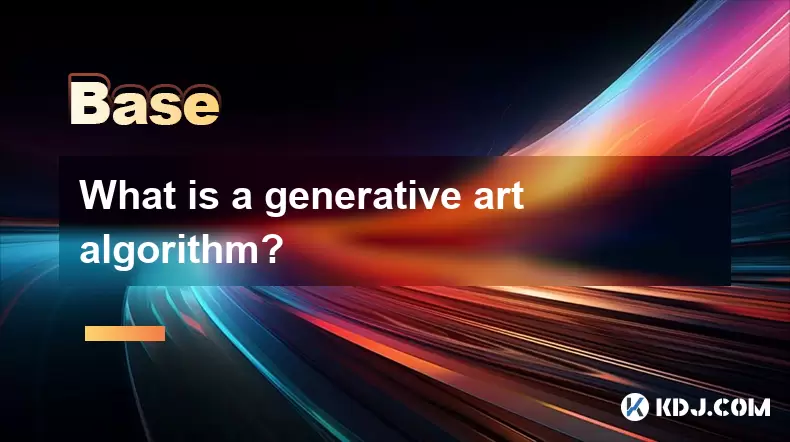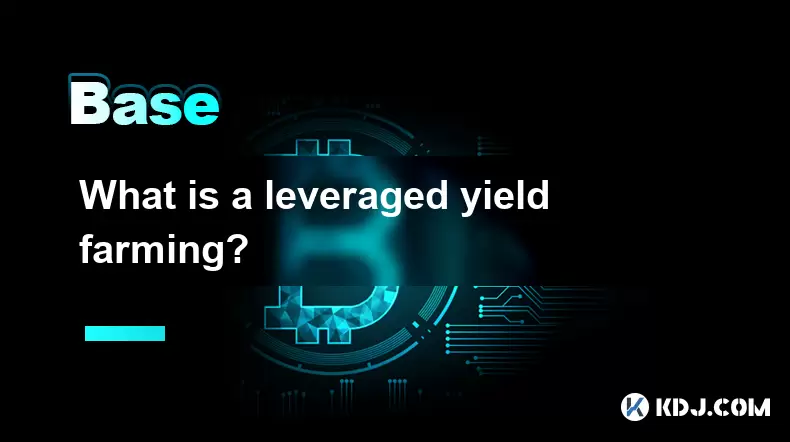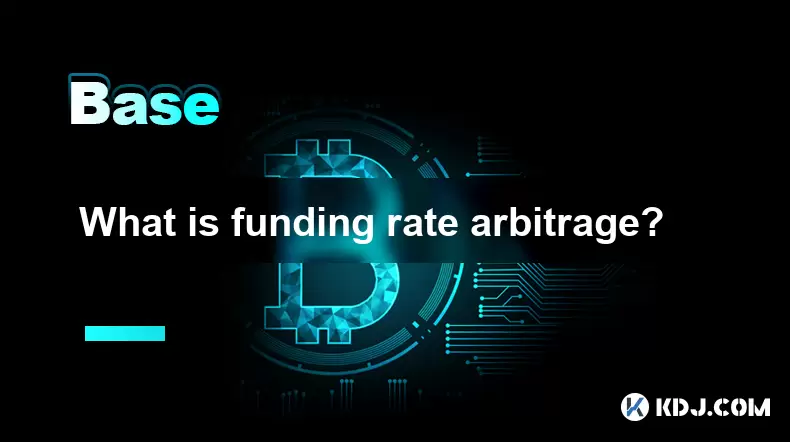-
 Bitcoin
Bitcoin $108,463.3266
-1.47% -
 Ethereum
Ethereum $2,535.8576
-3.62% -
 Tether USDt
Tether USDt $1.0006
0.02% -
 XRP
XRP $2.2352
-2.24% -
 BNB
BNB $658.1049
-0.63% -
 Solana
Solana $149.9207
-2.53% -
 USDC
USDC $0.9998
-0.07% -
 TRON
TRON $0.2857
0.45% -
 Dogecoin
Dogecoin $0.1659
-4.24% -
 Cardano
Cardano $0.5784
-3.85% -
 Hyperliquid
Hyperliquid $38.4944
-4.70% -
 Sui
Sui $2.9107
-4.19% -
 Bitcoin Cash
Bitcoin Cash $485.3637
-3.32% -
 Chainlink
Chainlink $13.3074
-4.18% -
 UNUS SED LEO
UNUS SED LEO $9.0499
0.41% -
 Avalanche
Avalanche $18.0347
-3.98% -
 Stellar
Stellar $0.2394
-2.23% -
 Toncoin
Toncoin $2.8110
-2.68% -
 Shiba Inu
Shiba Inu $0.0...01155
-3.23% -
 Litecoin
Litecoin $87.7967
-3.87% -
 Hedera
Hedera $0.1555
-2.87% -
 Monero
Monero $317.3839
-1.79% -
 Polkadot
Polkadot $3.4144
-4.90% -
 Dai
Dai $1.0000
-0.02% -
 Ethena USDe
Ethena USDe $1.0003
0.00% -
 Bitget Token
Bitget Token $4.4734
-2.29% -
 Uniswap
Uniswap $7.2556
-6.53% -
 Pepe
Pepe $0.0...09693
-7.27% -
 Aave
Aave $267.0924
-4.81% -
 Pi
Pi $0.4834
-3.31%
What is a generative art algorithm?
Generative art uses algorithms to create unique digital artworks, often minted as NFTs on blockchains like Ethereum.
Jul 03, 2025 at 08:35 pm

Understanding Generative Art in the Context of Cryptocurrency
Generative art refers to a category of digital art created through the use of algorithms, typically involving some level of automation or randomness. In the cryptocurrency and NFT space, generative art has become increasingly popular due to its ability to produce unique, algorithmically generated visual assets that can be tokenized and sold on blockchain platforms.
Unlike traditional art forms where an artist manually creates each piece, generative art relies on predefined rules encoded in software to generate images, animations, or even 3D models. These rules are often based on mathematical formulas, procedural generation techniques, or artificial intelligence models.
In the context of blockchain, generative art is frequently used to mint thousands of unique NFTs as part of collections such as CryptoPunks or Bored Ape Yacht Club.
How Do Generative Art Algorithms Work?
A generative art algorithm operates by combining layers of visual elements (such as backgrounds, facial features, clothing, etc.) according to a set of programmed instructions. Each layer is usually stored as a separate image file, and the algorithm randomly selects and combines these layers to create a final artwork.
The process involves:
- Defining a set of base traits (e.g., eyes, mouth, hat)
- Assigning rarity weights to specific traits
- Using a random number generator to select traits
- Composing the selected traits into a single image
These steps are typically implemented using programming languages like Python or JavaScript, with libraries such as PIL (Python Imaging Library) or Canvas.js for rendering the final output.
The key aspect of generative art lies in the randomness and uniqueness of each resulting image, which makes it ideal for creating limited NFT collections.
Tools and Technologies Used in Generative Art Creation
Developers and artists interested in creating generative art for NFT projects often rely on specialized tools and frameworks. Some of the most commonly used include:
- HashLips Art Engine: An open-source tool specifically designed for generating NFT collections using layered images.
- Processing: A flexible software sketchbook and a language for learning how to code within the context of the visual arts.
- p5.js: A JavaScript library that starts with the original ideas of Processing and translates them into the web environment.
- Python with PIL/Pillow: Allows developers to manipulate images programmatically and combine layers efficiently.
These tools help streamline the creation of thousands of unique images from a relatively small set of base components.
When building generative art, attention must be paid to trait combinations to avoid duplicates or unintended overlaps between layers.
The Role of Smart Contracts and On-Chain Generation
While many generative art projects store their final images off-chain (e.g., on IPFS), some newer projects are experimenting with on-chain generation, where the actual algorithm runs inside a smart contract.
This approach ensures full transparency and immutability since the logic that generates the art resides directly on the Ethereum or Polygon blockchain. However, this method requires more gas fees and computational resources during minting.
Projects like Art Blocks (formerly known as Async Art) have pioneered this technique by allowing users to mint generative art pieces whose visuals are rendered in real-time when the NFT is minted.
On-chain generative art provides greater decentralization and long-term preservation benefits compared to off-chain storage solutions.
Creating Your Own Generative Art NFT Collection: A Step-by-Step Guide
If you're interested in launching your own generative art NFT collection, here's a simplified breakdown of the process:
- Design a set of visual traits and attributes for your characters or objects
- Create individual PNG files for each trait without background interference
- Use a generative script to randomly combine these traits into final images
- Upload the generated images and metadata to decentralized storage (e.g., IPFS)
- Deploy a smart contract that mints NFTs linked to these images
Each step requires careful planning and execution. For example, when uploading to IPFS, you must ensure all generated images and JSON metadata files are properly pinned and accessible via permanent URLs.
Metadata standards like ERC-721 and ERC-1155 play a crucial role in ensuring that NFT marketplaces display your generative art correctly.
Frequently Asked Questions About Generative Art Algorithms
Q: Can generative art algorithms be modified after NFT minting?
Yes, but only if the smart contract allows for updates. Most NFT contracts lock the metadata and image links once minting is complete to ensure scarcity and authenticity.
Q: How is randomness ensured in generative art NFTs?
Randomness is typically achieved using pseudo-random number generators (PRNGs) at the time of image generation. More advanced systems may integrate Chainlink VRF (Verifiable Random Function) for secure and unpredictable outcomes.
Q: What file formats are best for generative art NFTs?
PNG is the most common format due to its lossless compression and support for transparency. JPEG may also be used but is less common for layered generative art.
Q: Are generative art NFTs more valuable than hand-drawn ones?
Value depends on factors like project popularity, rarity, community engagement, and overall aesthetics. Both generative and hand-crafted NFTs can hold significant value depending on market demand.
Disclaimer:info@kdj.com
The information provided is not trading advice. kdj.com does not assume any responsibility for any investments made based on the information provided in this article. Cryptocurrencies are highly volatile and it is highly recommended that you invest with caution after thorough research!
If you believe that the content used on this website infringes your copyright, please contact us immediately (info@kdj.com) and we will delete it promptly.
- Bitcoin's Pattern Break: Are HODLers the Key to the Next Surge?
- 2025-07-04 18:50:12
- Bitcoin Price, Trump's Bill, and the $150K Dream: A NYC Take
- 2025-07-04 19:50:12
- Ethereum, LILPEPE, and the July Bounce: Will Pepe Steal ETH's Thunder?
- 2025-07-04 19:10:12
- Binance Institutional Loans: Unlocking 4x Leverage and Zero Interest for Whales
- 2025-07-04 19:15:12
- Bitcoin Bull Run: Analysts Eye Peak in Late 2025?
- 2025-07-04 19:20:13
- Pepe Indicators, Bullish Forecast: Can the Meme Coin Rally?
- 2025-07-04 19:25:12
Related knowledge

What is a user-generated content (UGC) NFT platform?
Jul 04,2025 at 01:49pm
Understanding the Concept of a UGC NFT PlatformA user-generated content (UGC) NFT platform is a digital marketplace or ecosystem where users can create, mint, and trade non-fungible tokens (NFTs) that represent ownership of original digital content they produce. Unlike traditional NFT platforms where creators often include professional artists or develo...

What is a token generation event (TGE)?
Jul 04,2025 at 07:14am
Understanding the Basics of a Token Generation Event (TGE)A Token Generation Event (TGE) refers to the process through which a blockchain project creates and distributes its native tokens to investors, participants, or stakeholders. This event is often associated with new cryptocurrency projects launching on platforms like Ethereum, Binance Smart Chain,...

What is a block explorer API?
Jul 04,2025 at 05:07am
Understanding the Role of a Block Explorer APIA block explorer API is a crucial interface that enables developers and users to interact programmatically with blockchain data. Unlike traditional APIs used in web services, a block explorer API specifically provides access to blockchain-related information such as transaction details, wallet balances, bloc...

What is a leveraged yield farming?
Jul 04,2025 at 09:36am
Understanding Leveraged Yield FarmingLeveraged yield farming is a more advanced form of yield farming, which itself is a popular method in the decentralized finance (DeFi) ecosystem to earn returns by providing liquidity to various protocols. In traditional yield farming, users deposit tokens into a DeFi platform and earn rewards in return, often in the...

What is open interest in derivatives?
Jul 03,2025 at 02:49pm
Understanding Open Interest in DerivativesOpen interest is a critical metric used in the cryptocurrency derivatives market, particularly when analyzing futures and options contracts. It represents the total number of outstanding contracts that have not been settled or closed by either party involved. Unlike trading volume, which counts all trades made i...

What is funding rate arbitrage?
Jul 04,2025 at 11:43am
Understanding Funding Rate Arbitrage in the Cryptocurrency MarketFunding rate arbitrage is a trading strategy employed by crypto traders to exploit differences in funding rates across various perpetual futures exchanges. In perpetual contracts, funding rates are periodic payments made between long and short traders depending on whether the price of the ...

What is a user-generated content (UGC) NFT platform?
Jul 04,2025 at 01:49pm
Understanding the Concept of a UGC NFT PlatformA user-generated content (UGC) NFT platform is a digital marketplace or ecosystem where users can create, mint, and trade non-fungible tokens (NFTs) that represent ownership of original digital content they produce. Unlike traditional NFT platforms where creators often include professional artists or develo...

What is a token generation event (TGE)?
Jul 04,2025 at 07:14am
Understanding the Basics of a Token Generation Event (TGE)A Token Generation Event (TGE) refers to the process through which a blockchain project creates and distributes its native tokens to investors, participants, or stakeholders. This event is often associated with new cryptocurrency projects launching on platforms like Ethereum, Binance Smart Chain,...

What is a block explorer API?
Jul 04,2025 at 05:07am
Understanding the Role of a Block Explorer APIA block explorer API is a crucial interface that enables developers and users to interact programmatically with blockchain data. Unlike traditional APIs used in web services, a block explorer API specifically provides access to blockchain-related information such as transaction details, wallet balances, bloc...

What is a leveraged yield farming?
Jul 04,2025 at 09:36am
Understanding Leveraged Yield FarmingLeveraged yield farming is a more advanced form of yield farming, which itself is a popular method in the decentralized finance (DeFi) ecosystem to earn returns by providing liquidity to various protocols. In traditional yield farming, users deposit tokens into a DeFi platform and earn rewards in return, often in the...

What is open interest in derivatives?
Jul 03,2025 at 02:49pm
Understanding Open Interest in DerivativesOpen interest is a critical metric used in the cryptocurrency derivatives market, particularly when analyzing futures and options contracts. It represents the total number of outstanding contracts that have not been settled or closed by either party involved. Unlike trading volume, which counts all trades made i...

What is funding rate arbitrage?
Jul 04,2025 at 11:43am
Understanding Funding Rate Arbitrage in the Cryptocurrency MarketFunding rate arbitrage is a trading strategy employed by crypto traders to exploit differences in funding rates across various perpetual futures exchanges. In perpetual contracts, funding rates are periodic payments made between long and short traders depending on whether the price of the ...
See all articles

























































































